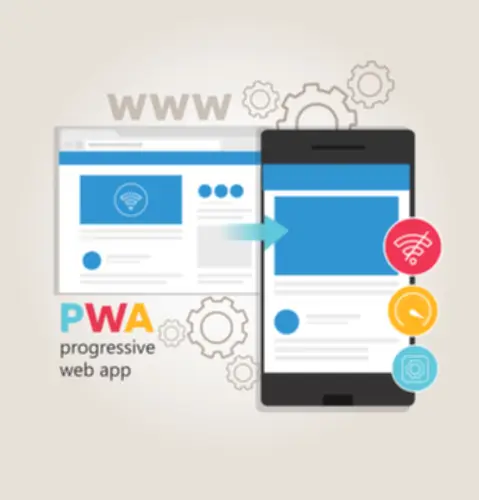2 and 3 show the impact of the pulling price on the distribution of oxygen…
Ci Cd Pipelines Explained Advantages And Finest Practices
With feature flags, you specify the environments in which your code is seen to users. Your modifications are still committed to major and visible to your staff, but you determine when the performance becomes out there in staging and manufacturing. Delivering new software is the one most important function of companies trying gitlab consulting to compete at present. Many corporations get caught with flaky scripting, manual interventions, complicated processes, and enormous unreliable software stacks across various infrastructure. Software teams are left scrambling to grasp their software supply chain and discover the foundation explanation for failures.
Search Code, Repositories, Customers, Points, Pull Requests

With returning them to a pristine state, tests that pass in one surroundings might fail in one other. Doing so in numerous environments can introduce inconsistencies within the software, which implies that you can not depend on previous check outcomes. Instead, one build artifact ought to be traveling via every stage and eventually, released to manufacturing. Essentially, it allows enterprises to release software program a quantity of occasions a day with minimal human involvement.
What Is Trunk-based Development?
The beneath picture describes how Continuous Integration mixed with Continuous Delivery helps quicken the software delivery course of with lower risks and improved quality. In easy language, it’s a change of software that goes by way of the cloud which is carried by the developer and it will reside within a few minutes of writing pass with the automated testing. This would possibly sound pretty basic, however the first step to building a CI pipeline with GitHub Actions is creating or choosing a repository on GitHub. You can both use an existing project code base, fork a project you like on GitHub, or begin from scratch. As with most automation methods, CI/CD depends on instruments to realize optimal workflows.

Streamlining Your Mlops Pipeline With Github Actions And Arm64 Runners
- The next step within the pipeline is continuous supply (CD), which places the validated code adjustments made in steady integration into select environments or code repositories, such as GitHub.
- We’re also using React and npm for package management, set up, and testing—but extra on that later.
- But the most important advantage of all is trusting that your code works after merging it to your primary branch, testing it, and deploying it.
- If bugs are discovered, developers can address them shortly earlier than more code is written on prime of a defective code base.
Shift-right testing entails testing later in improvement, normally in production environments. These methods complement each other by spreading testing duty across the SDLC. CI/CD creates a sooner, extra exact way of combining the work of different folks into 1 cohesive product. In DevOps environments, CI/CD streamlines utility coding, testing and deployment processes.
Each step of a CI/CD pipeline is a subset of tasks grouped into pipeline stages, which we focus on intimately additional down on this article. Having triggered an instance of your pipeline with a commit, the next stages are constructing and testing. If you may have automated unit exams, these are usually run before the build, alongside linting and static evaluation checks. The deployment course of varies primarily based on the character of the appliance and the manufacturing setting. For instance, it might contain deploying a Docker container to a Kubernetes cluster, updating an internet utility on a cloud service like AWS or Google Cloud, or just uploading recordsdata to a server. Read this blog and find out how CrowdStrike ensures organizations protect their cloud workloads throughout the entire software program development lifecycle to effectively combat adversaries concentrating on the cloud.
CD provides an automatic and consistent means for code to be delivered to these environments. A well-built and feature-rich application isn’t price a lot if end users do not use it. It additionally allows teams to make fixed improvements, similar to changes to the consumer experience and the addition of in-app guides, to encourage customers to make use of the appliance and its features. Peer code evaluation is a key factor in constructing a strong and egoless engineering culture of collaborative problem-solving. Developing with a monorepo means having a single, version-controlled code repository that accommodates many projects.

Using a device like Jenkins or CircleCI, the pipeline compiles the source code into an executable. If the codebase is a Java application, for instance, this would involve running a Maven or Gradle construct. When code is checked-in to the repository, that code is built-in into the master department. In older waterfall type workflows, integration/build would solely happen after the completion of a serious function set or large volume code changes.
There’s no reason why a CI/CD pipeline ought to be limited to at least one or a few branches. By operating the usual set of tests in opposition to each department and corresponding pull request, contributors can identify points before participating in peer review, or worse, earlier than the point of integration with the grasp department. The consequence of this practice is that merging any pull request becomes a non-event. Configuration information are saved in your code repository and are written in declarative YAML code. This configuration-as-code strategy allows teams to manage their pipeline definitions proper alongside their utility code, adding transparency and traceability to pipeline administration.
It deploys the appliance to this surroundings and runs a suite of automated exams. These exams might embody unit tests run by JUnit, integration tests run by a device like Postman, and end-to-end exams run by Selenium. Once the developer completes their task, they commit their changes to a shared repository. The pipeline, configured with webhooks, detects the commit and triggers the construct stage.
OpenShift Pipelines is designed to run every step of the CI/CD pipeline in its personal container, permitting every step to scale independently to meet the calls for of the pipeline. Flexible set off options and a visual pipeline editor make it simple to configure pipelines for any workflow. Configurations are automatically stored as code, providing you with the liberty to build and handle your pipelines in the GUI whereas having fun with the advantages of configuration-as-code. If you’re hosting your CI/CD pipelines by yourself infrastructure, you’ll still want VMs to deploy the containers to, however there’s much less work involved in preparing the test environments. If you’re working your pipeline within the cloud, utilizing containers means you’ll find a way to benefit from managed companies and offload the infrastructure management to your cloud supplier. A CI/CD pipeline can and should be more advanced than this if you’re constructing enterprise software program, sustaining a giant open supply project, or working with a giant group on any array of issues.
For example, automated tools can output errors however fail to speak accurate data to the developer liable for addressing the problem. In this case, others might forward that info to the relevant particular person. CI/CD pipelines usually contain a big workforce, typically divided into several teams with different duties.
Test and construct automation is key to a CI/CD pipeline, which helps builders identify potential code flaws early within the software growth lifecycle (SDLC). It is then easier to push code modifications to numerous environments and release the software to manufacturing. Automated tests can assess crucial aspects starting from application efficiency to safety. The code is constructed, testing has offered the green mild, and it’s time to push our adjustments to an setting, whether or not pre-production or manufacturing. With continuous deployment, regular automated push to non-production environments offers clear suggestions and metrics for how the code will perform when released to a customer-facing environment.
If metrics show it’s taking too lengthy to load a picture and users do not wait for it to load, developers can enhance load times. In every case, steady supply creates the suggestions loop needed to measure and enhance consumer expertise. With automated testing, which identifies when builds pass or fail, engineers can even move code through regression exams.
Transform Your Business With AI Software Development Solutions https://www.globalcloudteam.com/

This Post Has 0 Comments